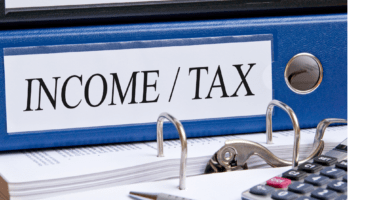Did you know that the equity-linked savings scheme is one of the most preferred investment instruments in the market today? Not only does ELSS invest in stock market traded equities of different well-performing companies, but also in money market funds and debt funds. It is also one of the best available options for investors who are looking for low-risk and wealth accumulating instruments in today’s market. Here’s why you should choose ELSS against other conventional investment instruments:
Tax Benefits
Taxpayers are eligible for tax deductions up to Rs.46,800 on investments up to Rs.1.50 lakh made towards ELSS under Section 80C of the IT Act, 1961. With the return on investment being taxable, ELSS holds its ground, generating higher post-tax returns when compared to other 80C investments.
Lock-in Period
While most conventional tax saving instruments come with a lock-in period ranging from 10 to 15 years, ELSS has the lowest lock-in period. For example, the lock-in period for the Public Provident Fund (PPF) is 15 years. ELSS, on the other hand, has a lock-in period of only three years.
Systematic Investment Plan (SIP)
When it comes to ELSS, investors have the option of either investing in lumpsum or instalments through a systematic investment plan (SIP). A SIP not only allows the investor to bring down the burden on his/her finances but also offer the benefit of rupee cost averaging over time.
Return on Investment (ROI)
ELSS has always been able to generate higher returns when compared to other conventional tax saving instruments in the market. This is due to the power of compounding. With compounding being a long-term strategy, investors are advised to remain invested in the scheme for at least 5-6 years. The longer you stay invested in ELSS, the more effective will the power of compounding have on your investments.
Also Read: SEBI Restricts Mutual Funds from Investing in Unlisted Securities
Flexibility
ELSS offers investors with flexibility. An investor can choose to switch from one ELSS fund to another if he/she is unhappy with the performance of the fund. This is something other instruments such as unit-linked insurance plans (ULIPs) do not offer. ULIPs require investors to switch and invest in funds provided by the ULIP in which you initially invested. This gives ELSS an edge over ULIPs, although both instruments generate similar returns on investment.
Controlled Risk
ELSS schemes are equity-based and linked to the market. There is always an element of risk that investors are required to keep in mind before investing. The Asset Management Company (AMC) takes your risk-taking capacity into account and allocates your investment between various funds, i.e. small-cap, mid-cap and large-cap funds to contain the risk associated. With the risk being distributed between different equity funds, the risk associated with the scheme is controlled accordingly.
Wealth Accumulation
The primary purpose of investing is for the accumulation of wealth. Once the lock-in period on ELSS expires, the scheme switches to become an open-ended scheme, meaning, the funds can be withdrawn anytime.
If you wish to accumulate wealth over time, you are advised to remain invested in the scheme. You might have various financial goals in your life. It may be anything from purchasing an apartment, your child’s education to planning your retirement. Keep investing until you reach your financial goal and let compounding do the rest.
Remember, ELSS is a market-linked and equity-based investment. The fund performances are also subject to market fluctuations. Hence, it is advised to stay invested for at least 5-6 years to generate higher returns.
If you are unsure of which funds to invest, ClearTax does precisely that for you. We help you choose from the best-handpicked funds recommended by mutual fund expends. You can choose to opt for our 100% paperless investment that saves on cost, time and effort. Your investment proof will be sent to your email instantly.
For any clarifications/feedback on the topic, please contact the writer at viswanathan.v@cleartax.in

Abbreviation is the name of the game – SIP, NPS, ELSS, KTM, and OMR.
Vishnu is the cat that got too curious. He can normally be found staring at market charts or drooling over his Real Madrid curios.
Favourite quote: ” Madrid, Madrid, Madrid ¡Hala Madrid! Y nada más”





